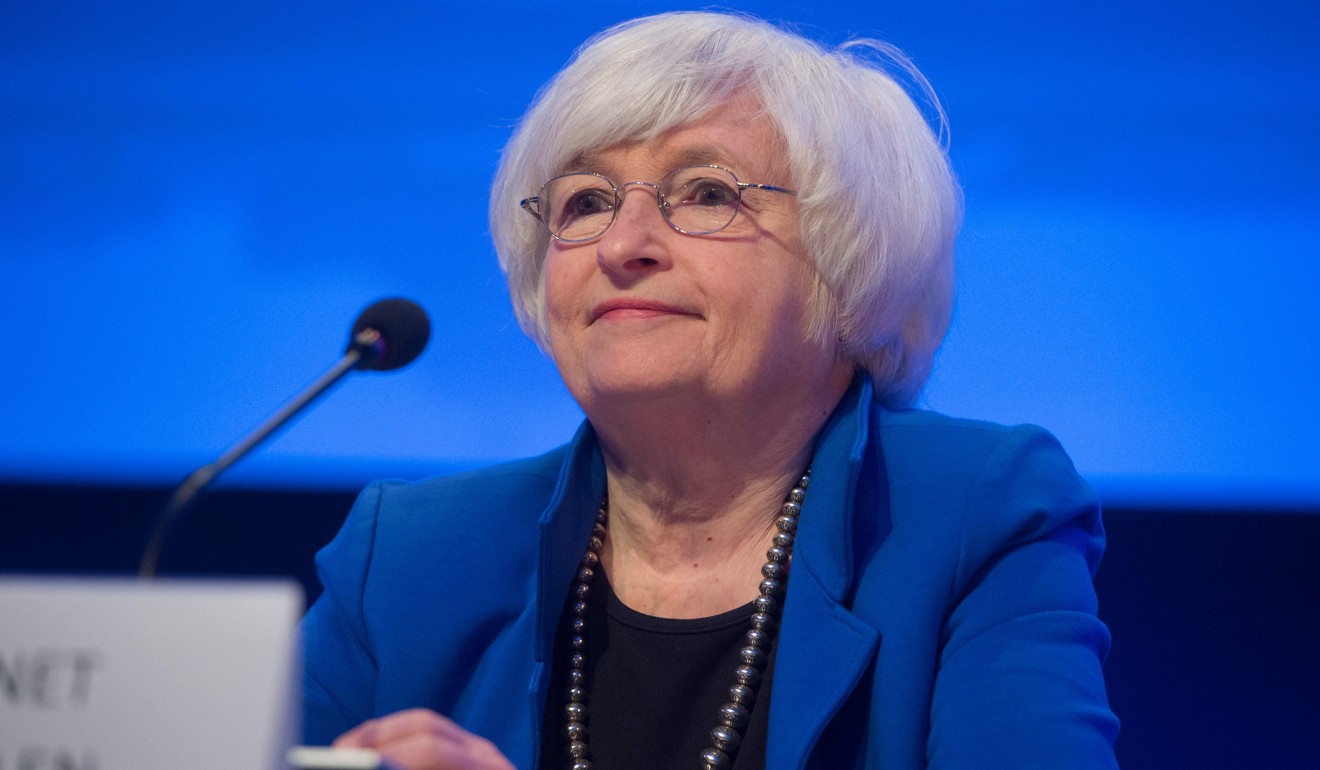
Donald Trump announces Jerome Powell as next chairman of the US Federal Reserve
Powell replaces Janet Yellen, whose term expires in February
President Donald Trump on Thursday announced his nomination of Federal Reserve governor Jerome Powell as the next chairman of the US central bank, replacing Janet Yellen, whose four-year term will expire in February.
If confirmed by the Senate, Powell is expected to continue Yellen’s gradual approach to raising interest rates.
Policymakers and financial markets have regarded Powell, a Republican who has served as a Fed governor since 2012, as a “safe” choice, given the expectation of continuity in US monetary policy.

Trump had praised Yellen’s handling of the economy and not ruled out the possibility of nominating her for a second term. But Republicans insisted that Yellen, a Democrat and the first woman to head the US central bank, be replaced.
At the same time, the Republican president has been eager to change policies and personnel left over from his predecessor, Democrat Barack Obama, and reportedly wishes to play a role in the Fed’s direction by picking a new chief.
Trump had narrowed his list to Powell and John Taylor, a former undersecretary of the Treasury for international affairs under the George W Bush administration, for the post.
Powell, who served as undersecretary of the Treasury for former President George HW Bush and as a partner at the Carlyle Group, a private equity firm, was the top choice of Treasury Secretary Steven Mnuchin, while Taylor was backed by vice-president Mike Pence.
Powell was not on Trump’s early radar as a possible successor to Yellen and was angling instead for a job as the US central bank’s vice chair for supervision.
But when he was passed over for that position last summer, it was one in a chain of events that left the 64-year-old Fed governor and investment banker on the cusp of taking over as head of the world’s most powerful central bank.

Powell, a Maryland native, avid cyclist, and guitar hobbyist, checked all the boxes that mattered but carried none of the negatives. Powell would become the first person without an advanced economics degree to hold the job since William Miller in the late 1970s.
A lawyer who lists personal assets of between US$20 million and US$60 million on government disclosure forms, Powell has worked in investment banking and served on corporate boards as a managing partner at the Carlyle Group, a private equity firm.
But he has also burrowed deep over the last five years into the nuts and bolts of central banking, and schooled himself on broader monetary policy issues.
“Jay does not come with baggage … He has never been at the extremes,” said Steve Bell, who worked with Powell at the Bipartisan Policy Centre think tank and when Powell was at the Treasury Department.
When compared to other possible nominees, some of whom called for sweeping but ill-defined changes at the Fed, Powell took “a straight tactical line” that offered a continuation of Yellen’s policies, a moderate approach to bank regulation and, perhaps most importantly, the prospect of no surprises, Bell said.
Powell’s private-sector experience likely appealed as well to Trump’s preference for business figures over those with advanced degrees.
“He is not a guy who has a rule named after him. He is not a guy who has said in the past we’ll have a bad reaction to quantitative easing and it is a disaster,” Bell said in a reference to Stanford University economist John Taylor and former Fed Governor Kevin Warsh.
Taylor, who developed the “Taylor Rule” for guiding monetary policy, and Warsh, who resigned over the Fed’s massive bond-buying stimulus programme which many now credit with spurring the US economy after the 2007-2009 recession, were interviewed for the Fed job.
They arguably had a head start, but they also carried the risk of financial market volatility, with investors regarding each as somebody who could tighten monetary policy at the central bank. That is something Trump has indicated he wants to avoid.

Powell’s close work with the Treasury resulted in Secretary Mnuchin becoming a strong advocate of his nomination to the top job. Fed Governor Randal Quarles, a friend and colleague who got the vice chair job that Powell had wanted, also was an additional ally in the mix.
But it was Powell’s support of the Yellen Fed’s policies, often credited with paving the way for a 4.2 per cent unemployment rate, steady economic growth and calm markets, that may have been his strongest advantage in the race.
“Trump is savvy enough to look at the numbers and who is in the chair,” said Peter Conti-Brown, an assistant professor at the Wharton School of the University of Pennsylvania.
Powell solves the problem of a Republican administration that wants “the Yellen Fed without Yellen,” Conti-Brown said.


